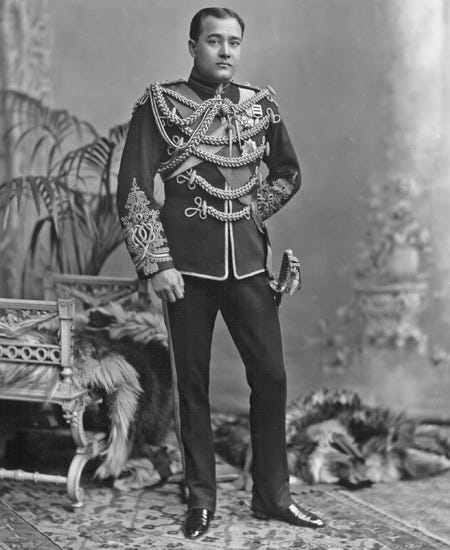The Maharaja's detective
Private detectives could work both for themselves and for other companies or individuals... even an Indian maharaja
Cooch Behar Palace (photo by Rupeshsarkar and used under creative commons)
A brief post today to make clear that there was not a single type of private detective in the nineteenth or twentieth centuries. Anyone who did investigative work outside of the police might be regarded as a private detective, and so the job title did not necessarily only apply to those working for themselves or for a detective agency. This is evident from looking at the censuses. Although some entries might only refer to an individual as a private detective in the broadest terms, others are more specific (this particularly applies for the 1911 and 1921 censuses, where a detective describes his or her own work, and is more likely to specify their employer).
Even in the 1901 census, there are various types of detective to be found. In Sheffield, for example, 67-year-old former police officer William May described himself as a private detective, but he was working specifically for a local steel works. Meanwhile, in Islington, London, 62-year-old Alfred Fudge – a former porter, and before that, police officer - was also a private detective, but was employed by the Great Western Railway (most of the railway companies appear to have employed detectives in order to clamp down on those who tried to get away with travelling with reduced-fare tickets they were not entitled to, or without a ticket at all). Working for a single employer made sense, and continued the security of wages both men had received as police officers.
Another common employer was the shop: store detectives are a common find, primarily (although not always) for large department stores or chains, including the likes of the Army & Navy Stores, Whiteley’s and Selfridges (which had its own detective section). Even local bazaars and church fairs might employ the odd private detective, often women, who posed as shoppers to spot pickpockets and thieves.
In the 1911 census, private detectives worked for other organisations as well; such as police pensioner William Tall, who found employment with a lightermens’ company in London, and Charles Smith, employed as a private detective at gas works in the Dartford area. Nearby, in Erith, former school caretaker James Burcher Type, 54, had been taken on by the engineering and aviation company Vickers as a private detective.
In terms of a glamorous sounding occupation, however, it’s hard to beat Frederick Ford, 33, who in 1911 was described as private detective to HRH the Maharaja of Cooch Behar. At the time of the census, he was living at 7 Orme Square in Hyde Park with the Maharaja’s Indian-born secretary and barrister, as well as his domestic servants. The Maharaja was Sir Nripenda Narayan, who would die in Sussex five months after the census was taken at the age of 48.
The Maharaja of Cooch Behar (photo via Wikipedia, public domain)
I don’t know what his private detective did once the master had died; did he continue working for his successor? Trying to find Frederick Ford elsewhere is not easy, given that his birthplace ‘at sea’ is not recorded in other censuses, he may have lived in Calcutta with the household at another time, and there are several individuals of this name and age (including my own great-grandfather, who sadly wasn’t a private detective). Just like Fudge, Tall, Type and their ilk - I didn’t make these names up - Ford found work in an arena where employers could be a diverse group, although his employer was certainly one of the most unusual I’ve come across.
So although seeing someone referred to in the archival record might conjure up images of a private eye engaged on watching individuals either as a maverick self-employed sleuth, or as a person employed by one of the detective agencies that proliferated in the second half of the nineteenth century and into the twentieth, this is not always the case.





